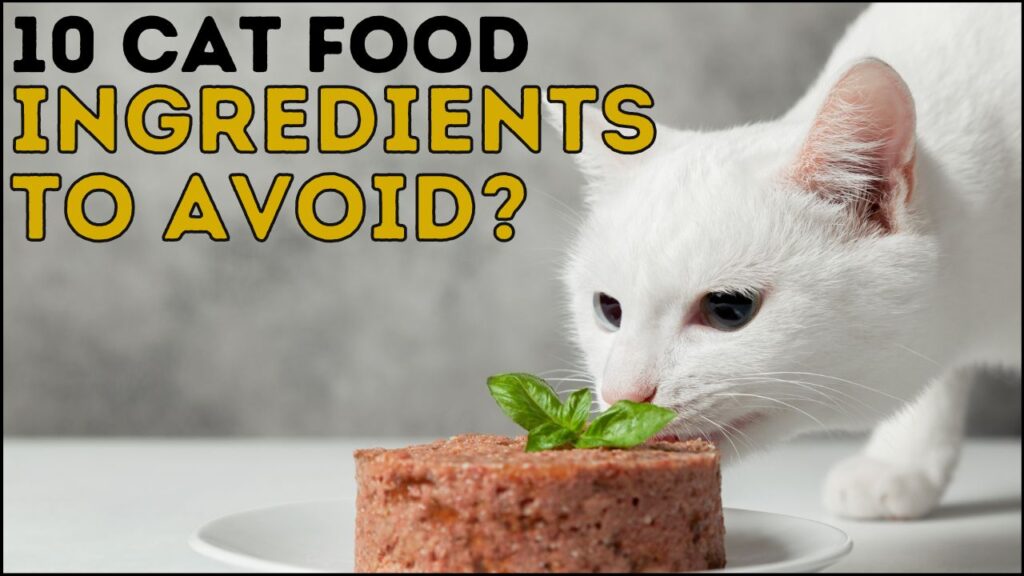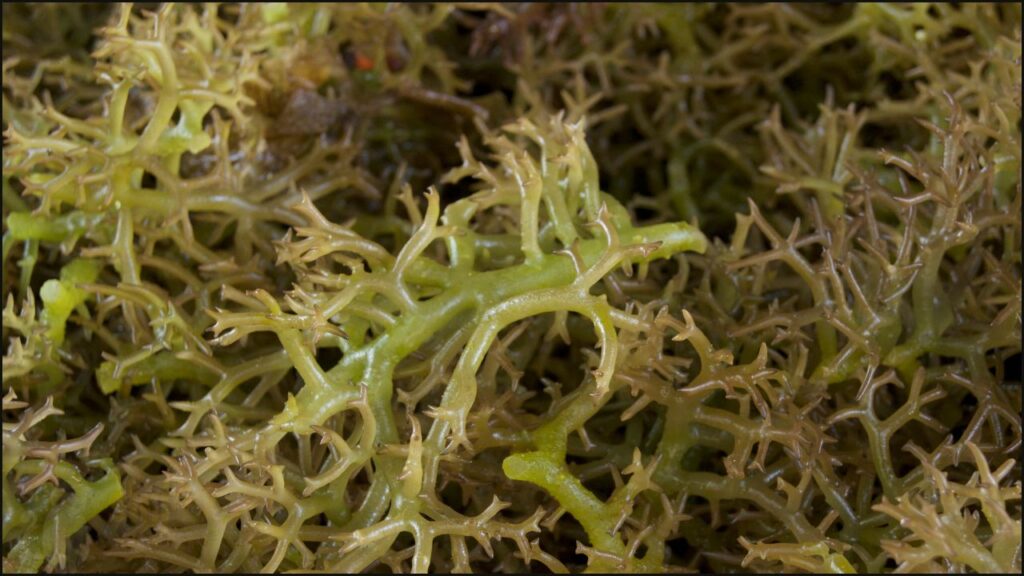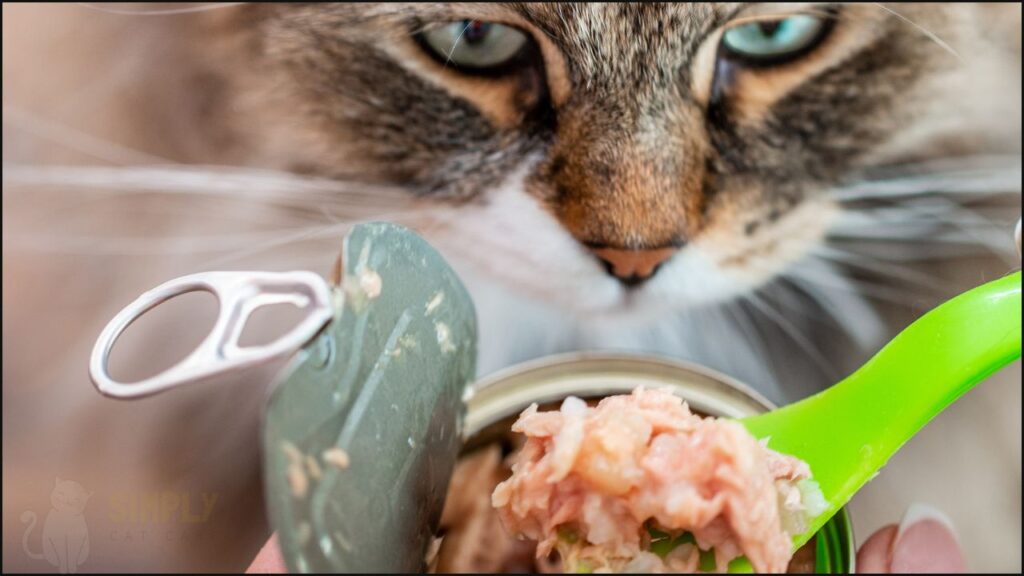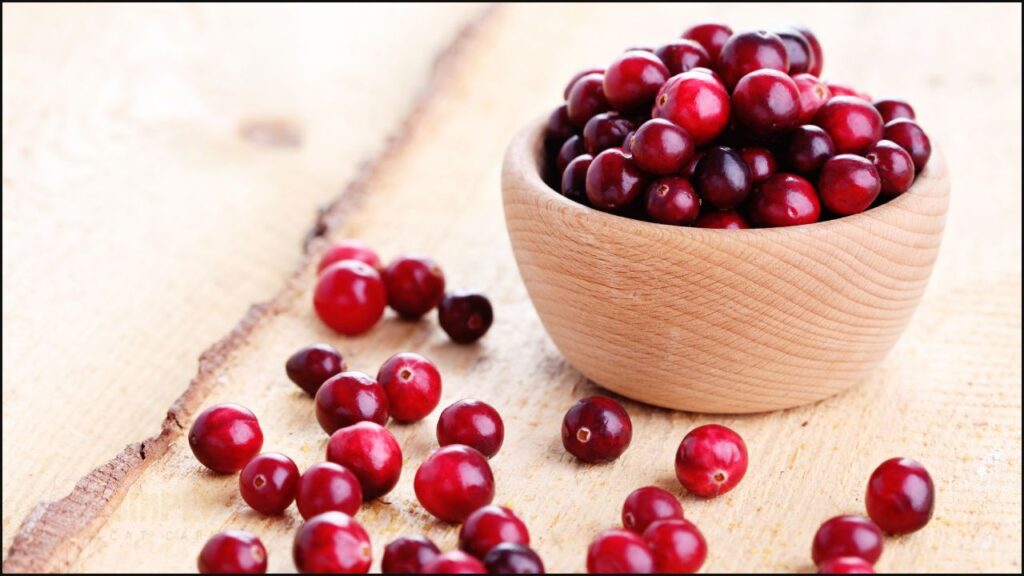There’s a lot of fear in the cat food world.
Avoid this! Avoid that!
Many things are safe in small amounts, and toxic in large amounts. Even water.
Yet there are some ingredients with a few problems.
So I decided to do something different.
In this article I’ll go through 10 cat food ingredients and whether to avoid them or not.
I’ll go through frequently asked questions on cat food ingredients as well.
So what’s really bad?
Find out…
I am not a veterinarian and I recommend seeking the advice of a vet for any further questions. This article is not intended as a replacement for medical advice.

10 Cat Food Ingredients to Avoid (Or Not)
1. Carrageenan
Carrageenan is a seaweed thickener.
As with many thickeners, it’s added to wet food, in particular gravy based cat food.
The ingredient is generally regarded as safe (GRAS) by the FDA. However, degradation of carrageenan through digestion is inflammatory.
Inflammatory conditions include:
- Colitis
- Arthritis
- Irritable bowel disease
How much is bad? Not known.
It’s best to err on the side of caution, since there’s plenty of carrageenan free cat foods.
Avoid? Yes.
Related:

2. Wheat Gluten
There’s a few issues with wheat gluten.
Some cats are intolerant to wheat gluten. Symptoms include itchy skin, vomiting and diarrhea.
Secondly, it’s a poor quality protein.
It’s protein digested corrected amino acid score (PDCAAS) is only 25%. That means there’s fewer essential amino acids (e.g. taurine) and it’s harder to digest.
Cats need a high protein diet, particularly seniors. Wheat gluten isn’t going to give cats the quality they need.
A similar ingredient, corn gluten meal, decreases moisture in feces. Not great for constipated cats.
Avoid? Yes.
3. Legumes
Legumes include:
- Peas
- Lentils
- Chickpea
- Soybean
Cats have a less distensible gut. Legumes contain oligosaccharide which is hard to digest and gas forming.
Intake can lead to flatulence and nausea in your cat.
Legumes are also high in carbohydrate. Cats have less ability to digest diets high in carbs.
High carb diets may cause diarrhea.
More worryingly, there’s a link to kidney damage with high carb diets.
Whilst a small amount of legumes is probably ok, you want to make sure it’s not a main ingredient.
Avoid? Keep it low.
Related:
4. Rice
Rice is a high carbohydrate grain.
It’s often seen in humans as a healthful ingredient, packed into meals.
By extension, it’s seen as healthful to cats.
Because, y’know, cats are like mini humans right?
Of course, given cats are carnivores, this isn’t the case. As discussed, cats have a limited ability to tolerate high carb diets.
Rice also impairs taurine absorption.
Of course, other high carb grains and ingredients are worth minimizing.
This includes:
- Wheat
- Barley
- Oats
- Potato
- Tapioca starch
Avoid? Keep it low.
Learn More:
5. Tuna
Tuna is great.
It’s high in protein, which cats love.
The problem is the mercury (heavy metal). Cats can only eat small amounts every week, otherwise they risk build up.
I recommend limiting tuna to a once a week treat at most.
Avoid? Keep it low.
Learn More:

6. Vegetable Oil
Vegetable oil includes:
- Sunflower oil
- Canola oil
- Olive oil
It doesn’t benefit cats.
A cat can’t use the omega 3 and 6 polyunsaturated fatty acids (PUFA) from plant sources. They need meat (e.g. salmon).
Excess PUFA increases vitamin E requirement. High PUFA to Vitamin E ratio can lead to problems like muscle wasting and abdominal pain.
Avoid? Keep it low.
7. Vitamin C
Unlike humans, cats don’t need dietary vitamin C (ascorbic acid).
It increases the risk of urinary blockage, as it’s an oxalate precursor. Oxalates build up and form uroliths.
Cranberry is also high in vitamin C, and best avoided for cats at risk of urinary blockage.
Whilst cranberry is good for humans, it’s not a great ingredient for cats.
A cat isn’t a mini human.
Avoid? Yes.

8. Meat by products
Meat by-products sound nasty.
The reality is they’re meat parts not used for human consumption.
Things like:
- Brains
- Kidneys
- Hearts
Whilst some people eat these foods, most don’t.
So these ‘spare parts’ are useful for the pet food industry.
Fortunately, they are nutritious, providing a range of vitamins and minerals. What is more of concern is un-named by products.
Things like ‘meat by-products’ are vague. They can include a range of meat sources not listed, increasing allergy risk.
Avoid? No, but be weary of ‘meat by products’.
Related:
9. Cellulose
Cellulose is powdered wood chip.
Why use powdered wood chips in cat food?
It’s a thickener and an anti-caking agent.
Cellulose is an indigestible fiber. So it has no nutrition benefit.
Avoid then?
Not necessarily. Cellulose is actually normal, found in a range of plants.
4% cellulose can help clear hairballs. As an insoluble fiber it adds bulk to stools, which can help with toileting.
However, too much can increase constipation risk by decreasing stool moisture.
Cats are also averse to the taste.
It’s a mixed bag here.
Avoid? Maybe (fussy and constipated cats).

10. Gums
Gums are plant based compounds. They help thicken wet cat food.
Many wet cat foods use gums including:
- Xanthan gum
- Guar gum
- Pectins
- Agar agar
Some cats may have food sensitivity to gums, but it’s not clear.
Gums are soluble fibers, which help add moisture to stools. This can help with constipation (e.g. psyllium).
The bad?
The taurine targets for wet cat foods are 200% higher than dry. Gums reduce digestibility of this amino acid.
Another mixed bag here.
Avoid? No, but avoid if your cat has diarrhea or is malnourished.
Frequently Asked Questions
What Should the First Ingredient in Cat Food Be?
Meat.
Meats like chicken, beef, and salmon are great first ingredients. They provide high quality protein, which is a cats main source of nutrition.
Related:
What Human Food Can Cats Eat Daily?
Not much.
Most human foods contain ingredients cats can’t have. This includes garlic, and onion (can cause anemia).
A small amount of plain cooked meat is ok for cats to eat occasionally.
Learn More:
How Do I Know if My Cat Food Is Healthy?
Check the statement of nutritional adequacy.
Choose cat food that’s designed as a sole feeding option. This means it gives cats all the nutrients they need for health.
Going further, check the carbs using a dry matter calculator. Less is best, especially for diabetic cats.
Related:
What Fish Is Best for Cats?
Salmon and whitefish.
This type of fish is low in mercury.
Fish like tuna is not best due to its higher mercury content. Tuna can health issues like depression and pansteatitis (fat oxidation disease).
Conclusion
The FDA regulates the ingredients in cat foods.
Whilst some are GRAS, you may want to limit ingredients with possible averse effects.
This includes carrageenan, vitamin C, and tuna.
Check the ingredients list before purchasing cat food, weighing the benefits and risks.
